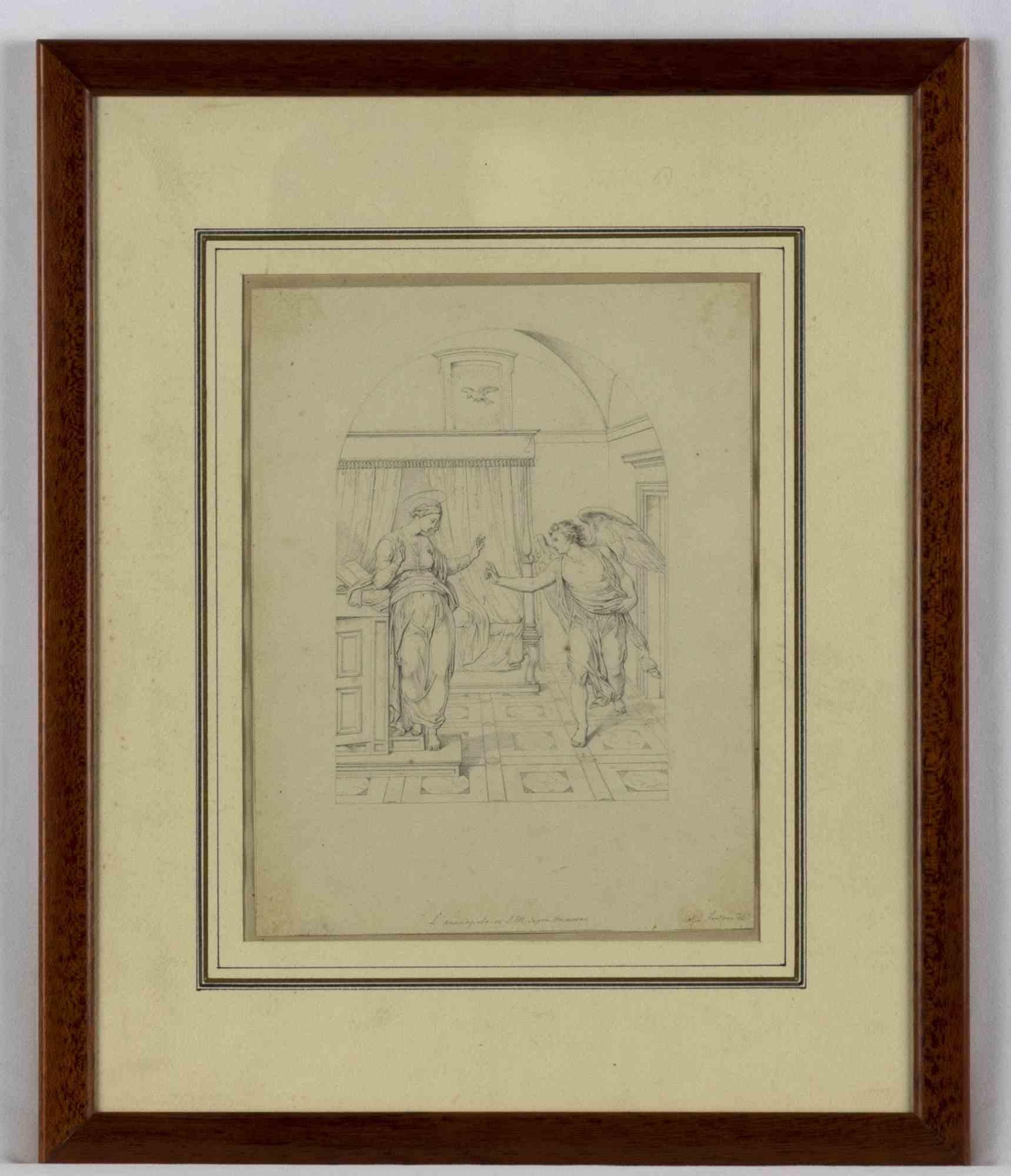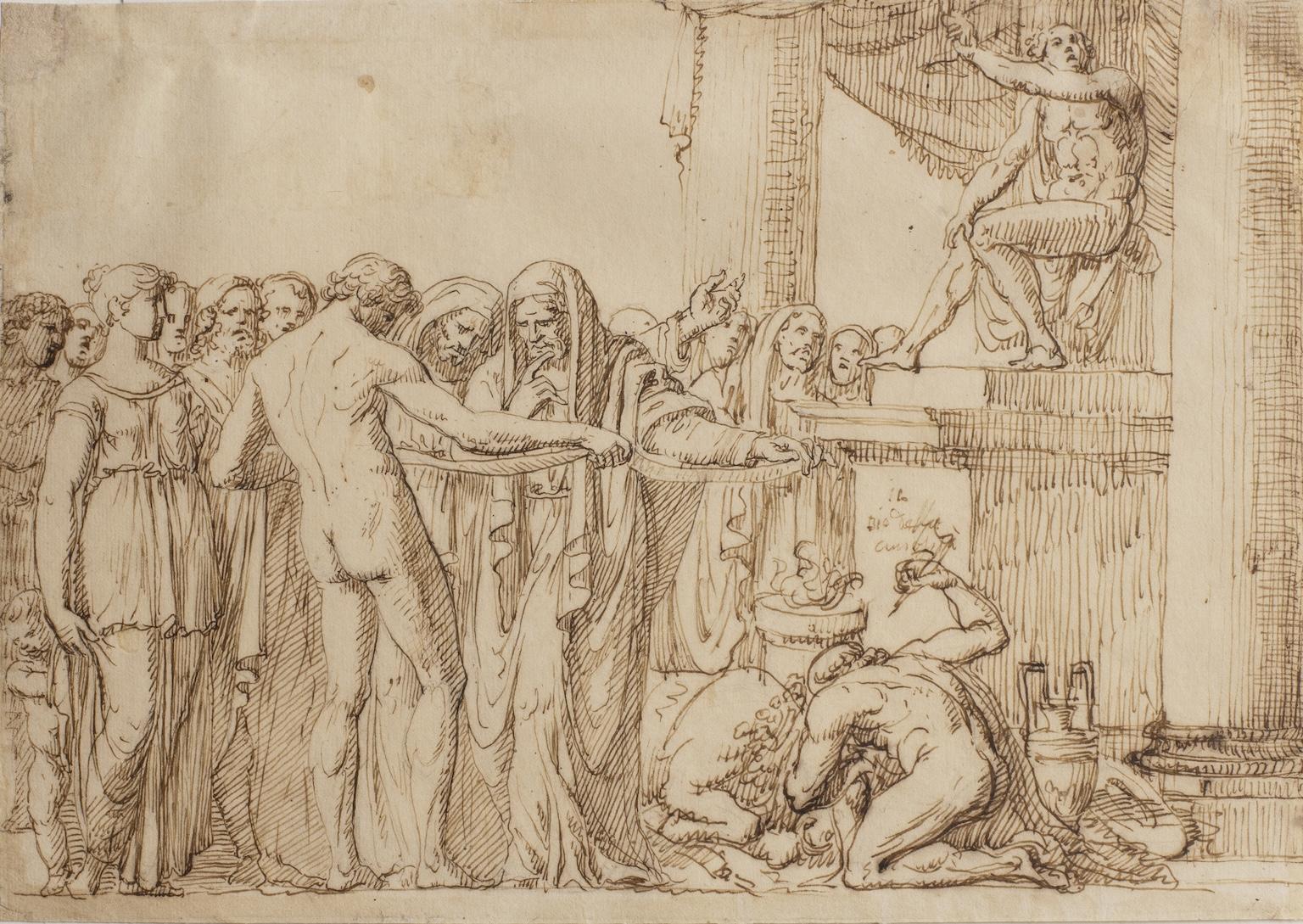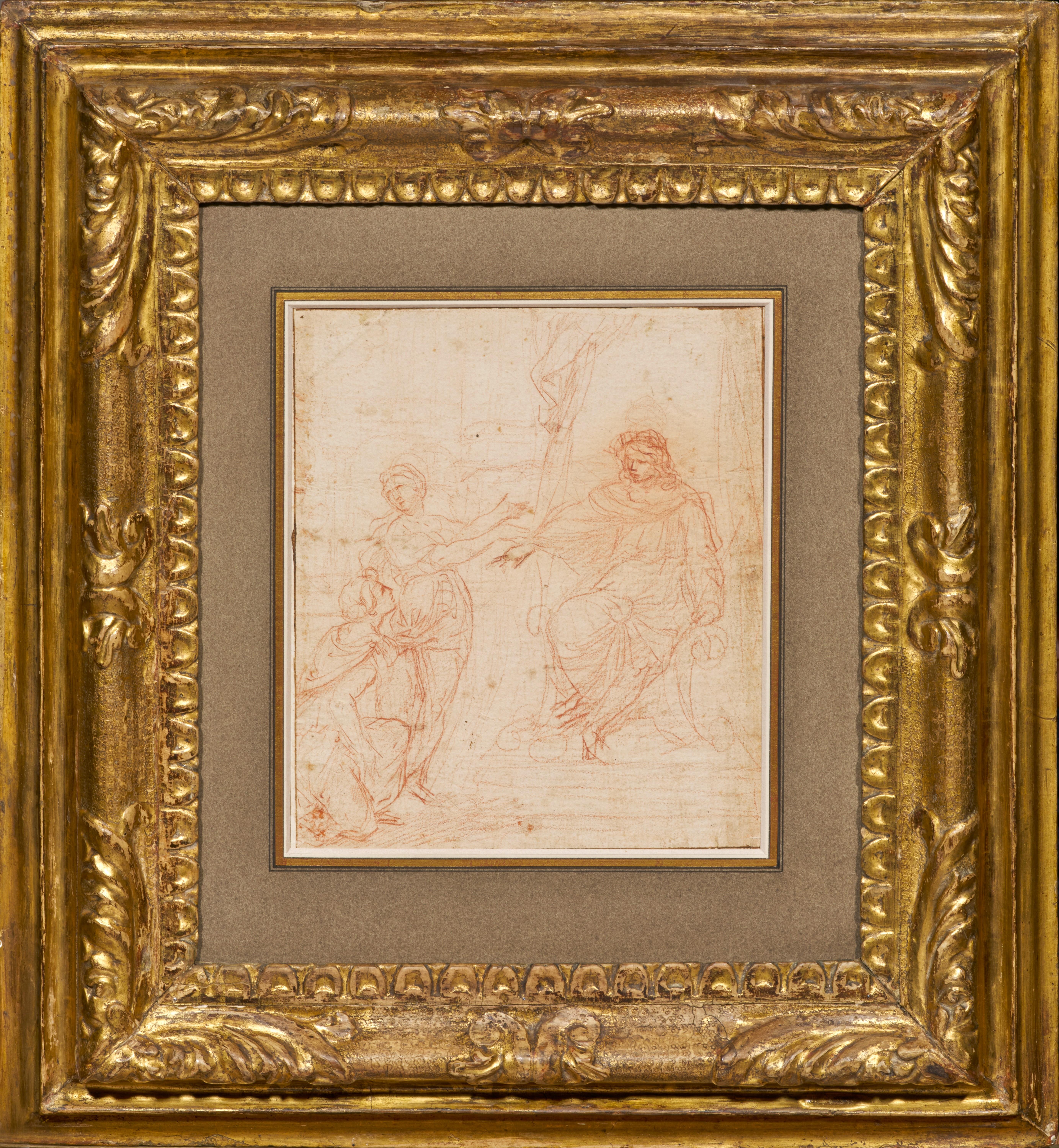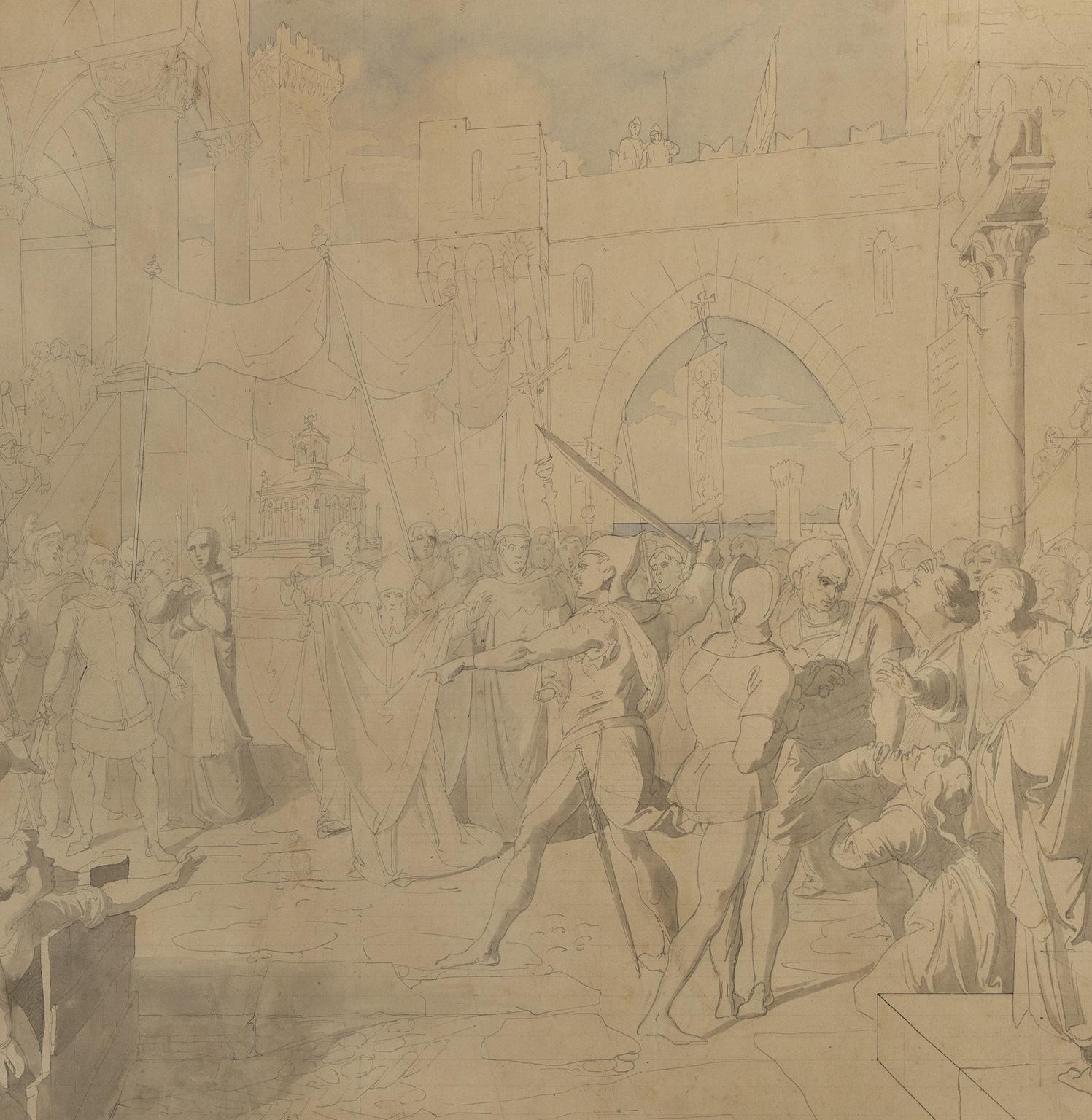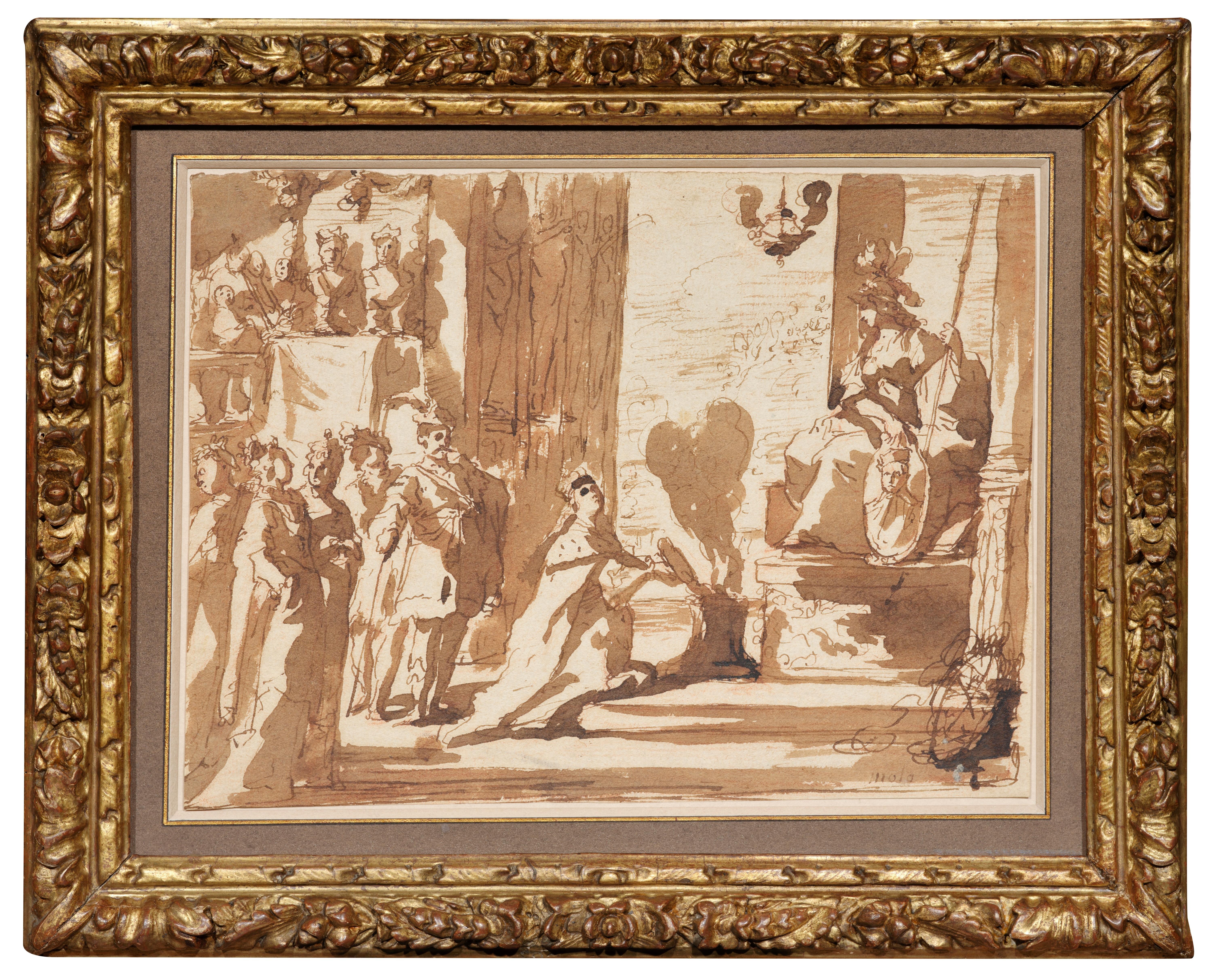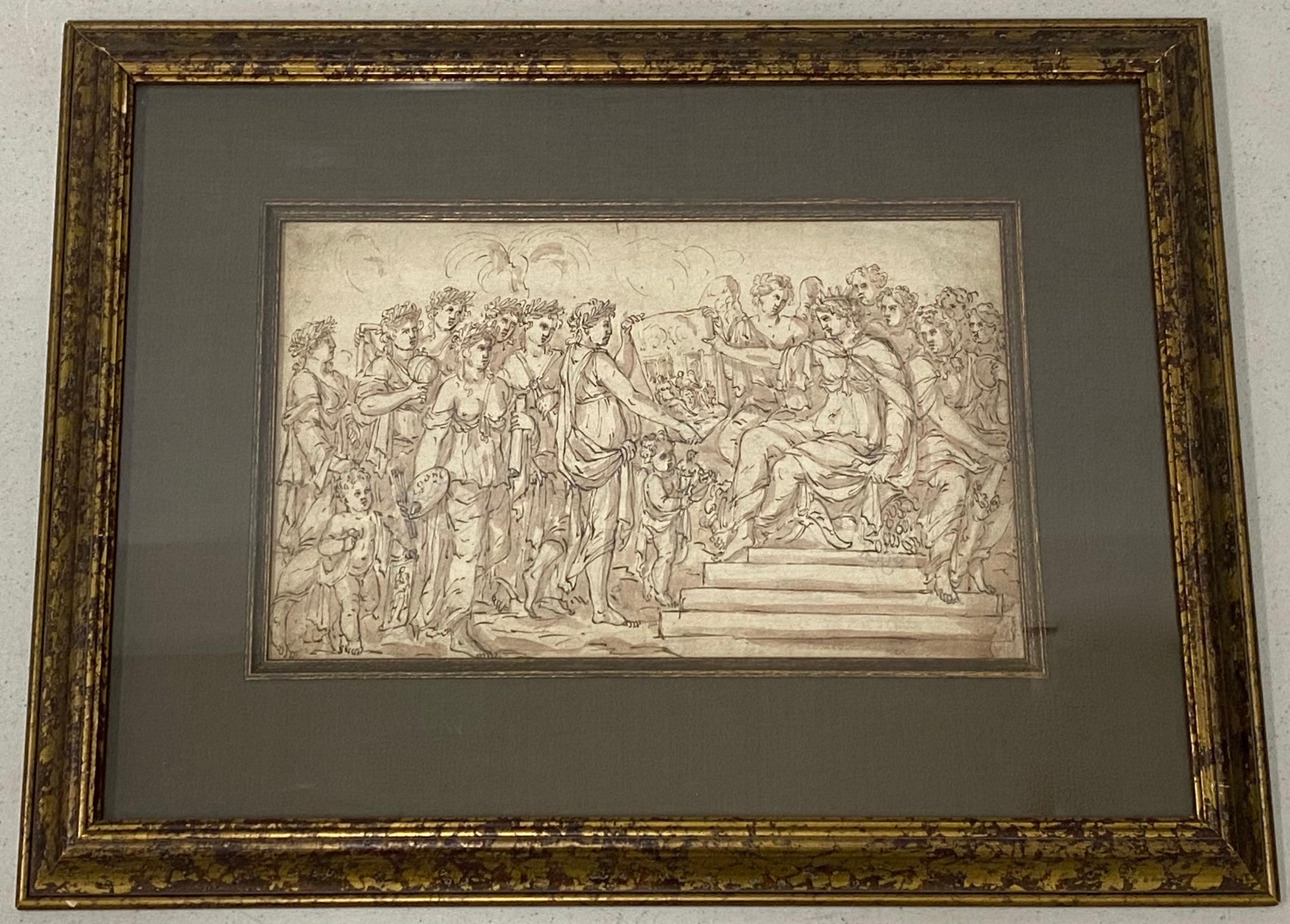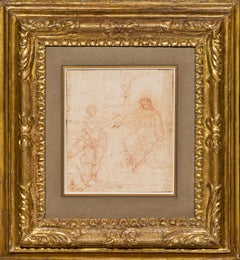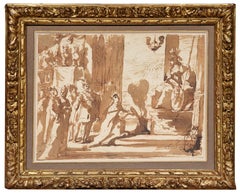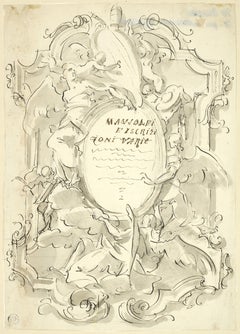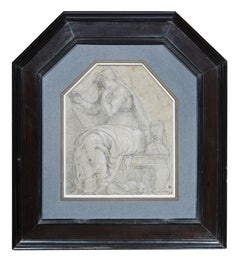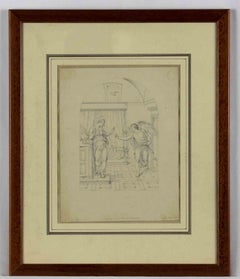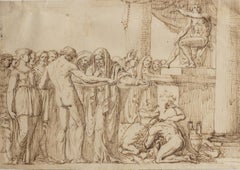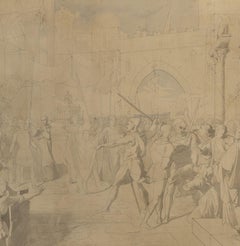Items Similar to From Renaissance Venice to Barocco Naples, a drawing by Francesco La Marra
Want more images or videos?
Request additional images or videos from the seller
1 of 15
Francesco La MarraFrom Renaissance Venice to Barocco Naples, a drawing by Francesco La Marra1750-1775
1750-1775
$10,763.03
£8,001.12
€9,000
CA$15,014.18
A$16,287
CHF 8,564.61
MX$198,179.84
NOK 107,071.46
SEK 100,981.54
DKK 68,540.46
About the Item
This vigorous drawing presents a brilliant synthesis between the Venetian tradition of Titian, of which it is a distant echo, and the Neapolitan Baroque of Solimena, which strongly influenced Francesco La Marra, a painter and engraver from Puglia whose rich graphic work has recently been rediscovered thanks to the work of several art historians.
In addition to the highly characteristic outlines of the numerous figures that animate this large composition, La Marra is recognizable by his almost systematic use of "patches" bearing a repentance, an example of which can be seen here on the left for the figure of Saint Francis.
1. Francesco La Marra, Neapolitan painter and engraver
Francesco La Marra was an artist from Puglia (he was born in Martina Franca in 1728) who moved to Naples in 1748. While little is known about his life, he is an artist whose body of work is still being compiled, but whose importance among Neapolitan artists of the second half of the 18th century is becoming increasingly clear.
He worked as an engraver illustrating religious books, but also as a cartographer, as he is believed to have been one of the engravers of the gigantic Map of Naples commissioned by the Duke of Noja (1768–1775). He is also thought to have worked alongside Pierre Yves d'Hancarville on engraving reproductions of antique vases to illustrate Lord Hamilton's collections. In 1792, a collection of prints reproducing drawings by La Marra after the great Neapolitan masters Mattia Preti, Luca Giordano, and Francesco Solimena (or supposed to be such) was published posthumously, demonstrating his graphic virtuosity and knowledge of the work of the great Baroque artists who worked in Naples. This graphic virtuosity and frequent homage to the great Neapolitan masters explain why La Marra's drawings were often attributed to Giordano or Solimena, before being gradually attributed to La Marra by contemporary critics .
While his graphic output appears to have been very prolific, few of his paintings are known today, the most famous being the three canvases he produced in the 1750s for the church of Santi Filippo e Giacomo in Naples, which have remained in situ.
2. A drawing with a complex iconography
The drawing we present features a complex iconography: the Virgin Mary is seated on a throne supported by a lion and a griffin at the foot of a large column; two cherubs carry the cross in the sky. The Virgin presents the Child she is holding in her arms to a first circle of holy figures, among whom we recognize Saint Francis on the left of the composition and Saint George on the right, his foot resting on the broken spear with which he defeated the dragon. A second circle represents donors kneeling at the bottom of the composition.
The composition is clearly inspired by one of Titian's masterpieces, the Pesaro Madonna (fifth picture in the gallery), and the fact that it has been depicted in reverse suggests that La Marra was probably familiar with this painting, preserved in Venice, through Valentin Lefèvre's print (4th picture in the gallery, as prints had been used since the Renaissance to convey formal innovations throughout workshops.
La Marra appropriates this composition entirely, reworking it in a manner that is both perfectly Baroque and highly personal: from a low angle (da sotto in su) that reinforces the monumentality of the composition, the Virgin appears in a centered position at the foot of a single column that symbolizes her role as mediator between the earthly realm occupied by both the viewer and the large assembly surrounding her, and the divine realm, conventionally located in the heavens. Saint Francis is now depicted as a Rückenfigur (while remaining recognizable by his habit and tonsure); this change in composition, made visible by the addition of the famous patch, allows the viewer to fully enter the composition at first glance.
A drawing from the Metropolitan Museum attributed to La Marra (last picture of the gallery), shares several common features with our composition: an elongated format and low-angle view, a bipartite composition, significant repentance on a laminated sheet, and the presence of a Rückenfigur that draws us into the composition...
Although we have not found any prints or paintings by La Marra using this composition, a drawing presented by the Drawingsonline gallery using the same finished composition (6th picture in the gallery) leads us to believe that it must have been produced.
3. Provenance and framing
We chose to frame this drawing in an Italian molded and gilded wooden frame (Emilia-Romagna, 18th century) with a particularly elaborate profile that truly highlights and emphasizes the Baroque monumentality of this composition.
- Creator:Francesco La Marra (1728 - 1787, Italian)
- Creation Year:1750-1775
- Dimensions:Height: 25.25 in (64.14 cm)Width: 20.38 in (51.77 cm)
- Medium:
- Movement & Style:
- Period:
- Condition:Dimensions: 15 ½’’ x 10 ½’’ (39.5 x 26.7 cm) – Framed: 25 ¼’’x 20 3/8’’ (64 x 51.8 cm) Provenance: private collection, Brussels Italian molded and gilded wooden frame – Emilia Romagna, 18th century.
- Gallery Location:PARIS, FR
- Reference Number:1stDibs: LU1568217021132
About the Seller
5.0
Vetted Professional Seller
Every seller passes strict standards for authenticity and reliability
Established in 2020
1stDibs seller since 2021
10 sales on 1stDibs
- ShippingRetrieving quote...Shipping from: PARIS, France
- Return Policy
Authenticity Guarantee
In the unlikely event there’s an issue with an item’s authenticity, contact us within 1 year for a full refund. DetailsMoney-Back Guarantee
If your item is not as described, is damaged in transit, or does not arrive, contact us within 7 days for a full refund. Details24-Hour Cancellation
You have a 24-hour grace period in which to reconsider your purchase, with no questions asked.Vetted Professional Sellers
Our world-class sellers must adhere to strict standards for service and quality, maintaining the integrity of our listings.Price-Match Guarantee
If you find that a seller listed the same item for a lower price elsewhere, we’ll match it.Trusted Global Delivery
Our best-in-class carrier network provides specialized shipping options worldwide, including custom delivery.More From This Seller
View AllStudies for the Judgment of Solomon, a double-sided drawing by Simone Cantarini
Located in PARIS, FR
In this double-sided red chalk study, Simone Cantarini offers us a double reflection on the theme of the Judgment of Solomon. This sheet reveals his precise style and his sense of de...
Category
1640s Old Masters Figurative Drawings and Watercolors
Materials
Chalk, Laid Paper
Allegory of the Treaty of Angoulême, a drawing attributed to Donato Mascagni
Located in PARIS, FR
We would like to thank Mrs. Ursula Verena Fischer Pace for suggesting the attribution to Donato Arsenio Mascagni.
We were immediately seduced by the rich tonalities of this allegory...
Category
1620s Old Masters Figurative Drawings and Watercolors
Materials
Ink
Study for a Frontispiece, a baroque drawing by Giovanni Antonio Pellegrini
By Giovanni Antonio Pellegrini
Located in PARIS, FR
This masterly frontispiece study, executed with a very sure hand, testifies to the survival of the great Baroque taste in 18th century Venice. It could be one of the very last works by Giovanni Antonio Pellegrini: the few lines that cross the papal arms evoke those of Benedict XIV, who became pope in 1740, one year before the artist's death.
1. Giovanni Antonio Pellegrini and the European influence of Venetian history painting in the 18th century
Giovanni Antonio Pellegrini was born in Venice in 1675 and trained in the studio of the Milanese painter Paolo Pagani (1655 - 1716). Pagani, who had been living in Venice since 1667, took him to Moravia and Vienna from 1690 to 1696. After a stay in Rome from 1699 to 1701, Pellegrini married Angiola Carriera in 1704, the sister of the great pastelist Rosalba Carriera.
From 1708 onwards, Pellegrini left Venice and began an extensive tour of Europe: he worked in England between 1708 and 1713, where he met great success, particularly at Kimbolton Castle and Castle Howard. He then worked in Germany and the Netherlands, then in Bohemia and Austria, before returning briefly to England in 1719. In 1720 he was in Paris where he decorated the ceilings of the Royal Bank for John Law...
Category
1740s Old Masters Figurative Drawings and Watercolors
Materials
Ink
Allegory of Chastity, a drawing attributed to G. Porta with great provenance
Located in PARIS, FR
This magnificent drawing from the Venetian Renaissance intrigues us in many ways. It depicts an allegorical composition whose meaning partly escapes us: a veiled figure seated on a stone bench (which we have identified as Chastity), seems to be turning away from a woman's bust beside her, below which are two rabbits, a traditional allegory of fertility, but also sometimes of lust.
This drawing, executed on blue paper, undoubtedly belongs to the Venetian Renaissance. The inscriptions on the back of the old mounting board indicate the various attributions considered by its last owner, the British painter and art historian Sir Lawrence Gowing. We have retained the attribution to Giuseppe Porta proposed by art historian John Arthur Gere as the most relevant.
We were incredibly fortunate to find a hexagonal frame of a very similar format for this drawing, the upper corners of which were formerly cut (irregularly). This 17th-century Dutch frame comes from an aristocratic collection in Lombardy, and creates a kind of fascinating chase around this Venetian drawing...
Category
16th Century Figurative Drawings and Watercolors
Materials
Chalk
The Martyrdom of Saint Bartholomew, a preparatory drawing by Alessandro Casolani
Located in PARIS, FR
This powerful pen and brown ink wash drawing is a study for an altarpiece depicting The Martyrdom of Saint Bartholomew. Signed and dated 1604, it was painted at the end of his life b...
Category
Early 1600s Old Masters Figurative Drawings and Watercolors
Materials
Ink, Pen
Frieze of antique figures, a drawing by the sculptor Antoine-Denis Chaudet
Located in PARIS, FR
Faithful to the neo-classical taste, sculptor Antoine-Denis Chaudet presents us with a frieze of antique figures executed in gray wash over pencil strokes, which is likely inspired b...
Category
Early 1800s Old Masters Figurative Drawings and Watercolors
Materials
Paper, Pencil, Ink
You May Also Like
L'Annunziata in S. M. - Drawing by Giovanni Fontana - 16th Century
By Giovanni Fontana
Located in Roma, IT
L'Annunziata in S. M. sopra Minerva is an original old master artwork realized by Giovanni Fontana.
Ivory colored sheet attached on an ivory colored cardboard ( cm 35.8 x 26.7)
Bea...
Category
16th Century Old Masters Figurative Drawings and Watercolors
Materials
Paper, Pencil
$4,394 Sale Price
25% Off
Figurative drawing neoclassical Tuscan historical subject from the 19th century
By Francesco Nenci
Located in Florence, IT
The proposed attribution for this drawing in brown ink on paper is the name of the painter and academician of the Tuscan-Roman neoclassical cohort Francesco Nenci (Anghiari, April 19...
Category
Early 19th Century Other Art Style Nude Drawings and Watercolors
Materials
Paper, Ink
Historical figurative drawing of 19th century Italian Romanticism
Located in Florence, IT
The subject illustrated here is one of the moments that mark the centuries-long history of Genoa's glorious Maritime Republic, when the ashes of St. John the Baptist, one of the city...
Category
1860s Romantic Figurative Drawings and Watercolors
Materials
Paper, Watercolor, Pen, Pencil
18th to 19th Century "Art Presentation" Old Master Drawing
Located in San Francisco, CA
18th to 19th Century "Art Presentation" Old Master Drawing
Remarkable old master pen, ink and wash drawing of an art presentation
Dimensions 14" wide x 8.5" high
The lightly distr...
Category
Early 19th Century Figurative Drawings and Watercolors
Materials
Ink, Watercolor
Disegno figurativo neoclassico fiorentino del XIX secolo
Located in Florence, IT
Disegno inchiostro, gesso, acquerellature e rialzi a biacca su carta collegato alla serie di studi per la decorazione della Sala di Ercole di Palazzo Pitti a Firenze.
Di mano di Piet...
Category
Early 19th Century Other Art Style Figurative Drawings and Watercolors
Materials
Paper, Ink, Watercolor
16th Century by Andrea Boscoli The payment of the duty Pen and ink on paper
Located in Milano, Lombardia
Andrea Boscoli (Florence, Italy, 1564 – Rome, Italy, 1608)
Title: 𝘛𝘩𝘦 𝘱𝘢𝘺𝘮𝘦𝘯𝘵 𝘰𝘧 𝘵𝘩𝘦 𝘥𝘶𝘵𝘺, 𝘧𝘳𝘰𝘮 𝘗𝘰𝘭𝘪𝘥𝘰𝘳𝘰 𝘥𝘢 𝘊𝘢𝘳𝘢𝘷𝘢𝘨𝘨𝘪𝘰
Medium: Pen and brow...
Category
16th Century Old Masters Figurative Drawings and Watercolors
Materials
Ink, Paper, Cardboard, Pen
